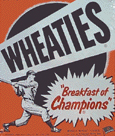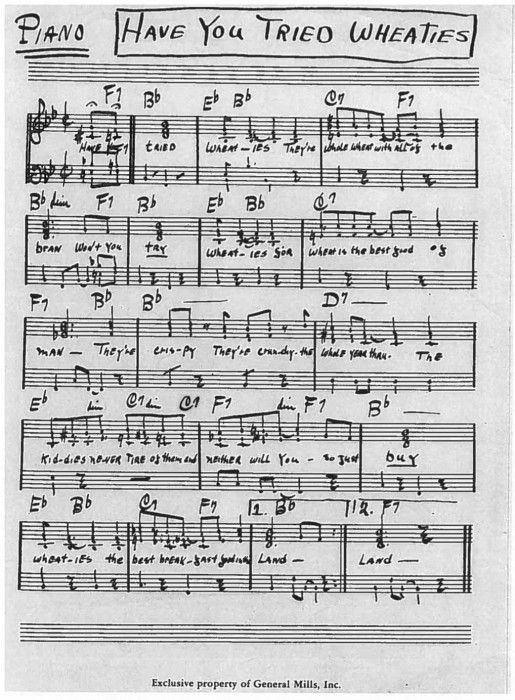
The very first jingle was broadcast in 1926
It all started on Christmas Eve 1926 in Minneapolis / St. Paul when 4 male singers stepped up to a live mic and sang:
Have you tried Wheaties?
They’re whole wheat with all of the bran.
Won’t you try Wheaties?
For wheat is the best food of man.
They’re crispy and crunchy
The whole year through,
The kiddies never tire of them
and neither will you.
So just try Wheaties,
The best breakfast food in the land.
From that point on it was known that a jingle could get a brand’s name embedded in the heads of potential customers. Once this jingle aired, 30,000 of the 53,000 cases of the General Mills Product (which was about to be dropped) were sold in the Twin Cities market! Jingles never looked back!

The Wheaties advertisement, with its lyrical hooks, was seen by its owners as extremely successful. According to one account, General Mills had seriously planned to end production of Wheaties in 1929 on the basis of poor sales. Soon after the song "Have you tried Wheaties?" aired in Minnesota, however, of the 53,000 cases of Wheaties breakfast cereal sold, 40,000 were sold in the Twin Cities market. After advertising manager Samuel Chester Gale pointed out that this was the only location where "Have You Tried Wheaties?" was being aired at the time, the success of the jingle was accepted by the company. Encouraged by the results of this new method of advertising, General Mills changed its brand strategy. Instead of dropping the cereal, it purchased nationwide commercial time for the advertisement. The resultant climb in sales single-handedly established the "Wheaties" brand nationwide.
After General Mills' success, other companies began to investigate this new method of advertisement. Initially, the jingle circumvented the ban on direct advertising that the National Broadcasting Company, dominant broadcasting chain, was trying to maintain at the time.[1] A jingle could get a brand's name embedded in the heads of potential customers even though it did not fit into the definition of "advertisement" accepted in the late 1920s.


